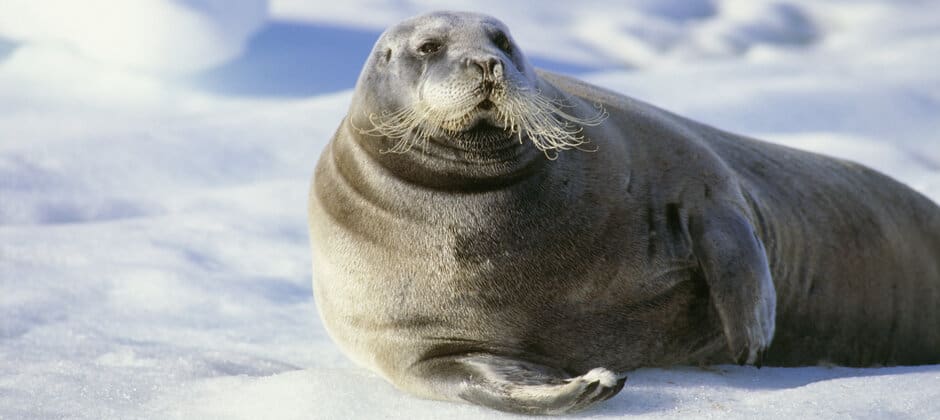Share this article
The deafening underwater soundscape of bearded seals
Bearded seals create a deafening underwater soundscape in the Canadian Arctic Ocean — particularly during mating season.
Explorations of the types of sounds they make and the volume of those noises can help researchers eventually better understand how increasing noise pollution from ships and other human sources might change the underwater soundscape of the Arctic.
“This at least gives us a really detailed characterization of the different frequency ranges that are important for these species,” said William Halliday, an associate conservation scientist of the Wildlife Conservation Society Canada and a co-author of the study published recently in Marine Mammal Science.
Many creatures like bearded seals (Erignathus barbatus), belugas (Delphinapterus leucas) and bowhead whales (Balaena mysticetus) communicate underwater through sound. Halliday and his team’s long-term goal is to determine how human noise might affect the acoustics of these marine mammals in the Arctic.
A previous study had classified the sounds of bearded seals from the western Canadian Arctic, based on data recorded in the 1970s. Halliday and his co-authors wanted to update this data and delve deeper into the sounds seals make. They dropped sound recorders into the sea in August 2015 off the southwest coast of Banks Island in the Northwest Territories of Canada. The devices recorded five minutes of sound every half hour for almost a year, until July 2016.
When they retrieved the data, they found the noise from the seals was astounding.
“You could barely hear other animals that were nearby just because the bearded seals were so loud,” Halliday said.
Annika Heimrich, a master’s student at the University of Victoria and Ghent University where Halliday is also based, then examined the digital recordings. She characterized thousands of seal calls and classified 18 different types of sounds.
The team found that many of their sounds were more common at certain times of the year. A type of trill that sounds a little like a dive bombing airplane was common all year round, but appeared more than five times more often during the breeding months from April to June.
“Bearded seals are vocalizing more and more as you get closer to breeding season,” Halliday said.
They also found an increase in the diversity of calls around mating season. While the winter months from November to January typically only had seals displaying a half dozen calls or so, the researchers heard all 18 calls during the breeding months.
It also got noisier in the breeding period.
“We see a doubling or quadrupling of acoustic energy compared to the nonbreeding season caused by seals,” Halliday said.
He said that this baseline knowledge can help researchers better characterize the general soundscape in parts of the Arctic Ocean. This will help future researchers understand the impacts of shipping noise, which is projected to increase in the North due to mineral exploration and an opening of shipping routes that may take advantage of the longer ice-free periods due to climate change.
While the researchers didn’t characterize whale noises, they did capture a number of their sounds on the recordings. Halliday said it would be interesting for future studies to better analyze these sounds.
Header Image: A bearded seal. Credit: Shutterstock








